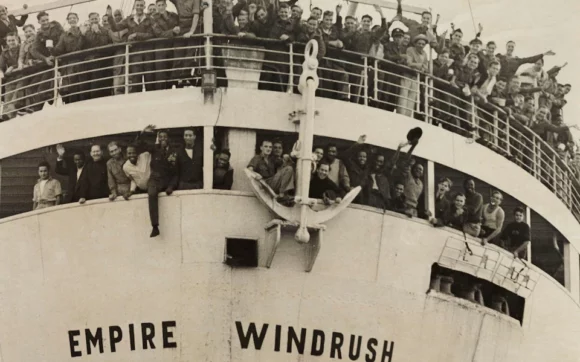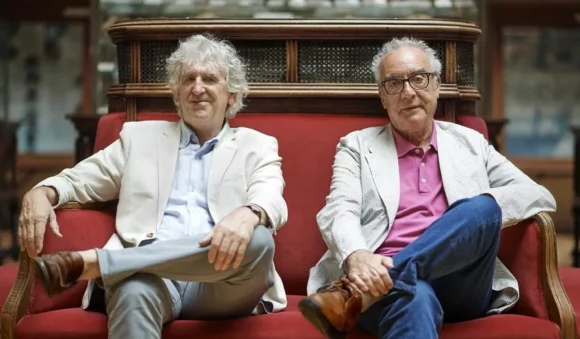Reading Sam Miller’s Migrants: The Story of Us All for the Telegraph, 23 January 2023
The cultural opprobrium attached to immigration has been building at least since Aristotle’s day, according to Sam Miller’s flawed, fascinating stab at a global history of migration.
Today, “having a permanent home and a lifelong nationality are considered normal, as if they were part of the human condition.” On the contrary, says Miller: humankind is the migratory species par excellence, settling every continent bar Antarctica, not once, but many times over.
Mixed feelings about this process have a deep anthropological foundation. Forget national and regional rivalries; those came later, and are largely explanations after the fact. What really upsets settled people is the reminder that, long ago, their kind chose to live an urban life and became less as a consequence: less wily, less tough, less resilient. The emergence of the first cities coincided with the first poems in uneasy praise of wild men: think of Mesopotamian Enkidu, or Greek Heracles. Aristotle, writing in 330 BC, declares that “he who is without a city-state by nature, and not by circumstance, is either a rogue or greater than a human being” — a wonderfully uneasy and double-edge observation that acknowledges a pre-urban past populated by formidable feral heroes.
Athenians suppressed this awareness; they were the first Western people to take pride in being, in Herodotus’s words, “the only Greeks who never migrated.” Ming Dynasty China performed the same flim-flam, a 15th-century administrator declaring: “There exists a paramount boundary within Heaven and Earth: Chinese on this side, foreigners on the other. The only way to set the world in order is to respect this boundary”.
“History books have, on the whole, been written by the sedentary for the sedentary,” says Miller, and naturally reflect a settled people’s chauvinism. The migration stories we learned at school are often wrong. The Vandals who “sacked” Rome in 455, did not, as a general rule, kill or rape or burn.
Alas, neither did they write; nor did the Roma, until the nineteenth century; nor did the (handsomely literate) Chinese of Victorian London. Migrants rarely find time to write, and where first-person accounts are missing, fantasy is bred. Some of it (Asterix) is charming, some of it (Fu Manchu) is anything but.
Miller thinks that humans naturally emigrate, and our unease about this is the result of pastoralism, cities, and other historical accidents.
The trouble with this line of argument is that there are umpteen “natural” reasons why people move about the earth. Humans naturally consume and lay waste to their immediate environment. Humans naturally overbreed. Humans naturally go to war. Why invoke some innate “outward urge”?
Different distances on the human story allow one to tell wildly different stories. If you follow humanity through deep time, our settlement of the almost the entire planet looks very much like manifest destiny and we’ll all surely end up on Mars tomorrow. If on the other hand you trace the movements of people over a few dozen generations, you’ll discover that, absent force majeure, people are homebodies, moving barely a few weeks’ walking distance from their birthplaces.
What is migration, anyway? Not much more than a hundred years ago, women regularly “migrated” (as Miller says, “it might take as long to cross a large English county as it would to fly halfway around the world today”) to marry or to work as governesses, domestic servants and shop workers. And yet they would never have called themselves “migrants”.
Miller, in a praiseworthy bid to tell a global story, adopts the broadest possible definition of migration: one that embraces “slaves and spouses, refugees and retirees, nomads and expats, conquerors and job-seekers.”
Alas, the broader one’s argument, the less one ends up saying. While they’re handsomely researched and stirringly written, I’m not sure our concepts of migration are much enriched by Miller’s brief tilts at historical behemoths like slavery and the maritime spice route.
What emerges from this onion of a book (fascinating digressions around no detectable centre), is, however, more than sufficent compensation. We have here the seed of much more enticing and potentially more influential project: a modern history that treats the modern nation state — pretending to self-reliance behind ever-more-futile barriers — as but a passing political arrangement, and not always a very useful one.
In view of the geopolitical crises being triggered by climate change, we may very soon need (or else be forced by circumstances) to come up with forms of government outside the rickety and brittle nation state. And in that case, peripatetic perspectives like Miller’s may be just what we need.



